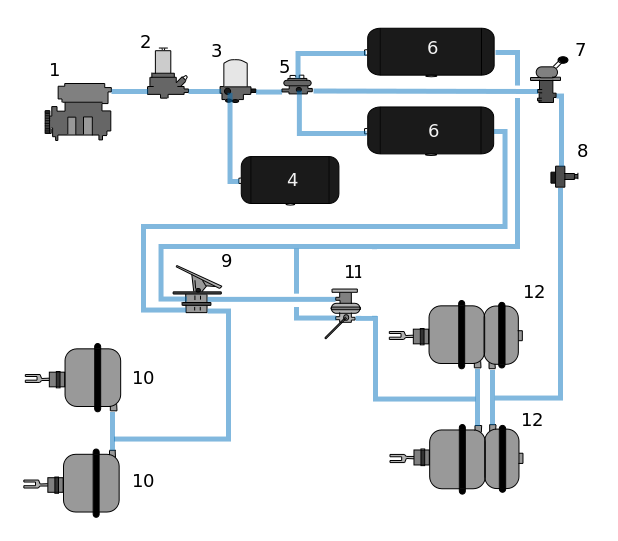
Inspecting Combination Vehicles – Truck & Trailers
A truck and trailer combination has more things to inspect than a single vehicle. Check the following during a walk-around inspection of a truck and trailer combination in addition to the items described above for the truck alone:
Check the coupling system areas:
Check the air and electric lines to the trailer. Be sure the electrical cord is firmly plugged in and secured. Be sure the air lines are properly connected to glad hands, have no air leaks, and are secured with sufficient slack in the lines for turns. Be sure all lines are free from damage.
Check the landing gear. Be sure the gear is raised, has no missing parts, and is not bent or otherwise damaged. Be sure the crank handle is in place and secured. If power operated, be sure there is no air or hydraulic leaks.
Check the truck and trailer combination brakes:
Be sure airflows to the trailer. Use the truck parking brake and/or chock the wheels to hold the vehicle. Wait for the air pressure to reach normal. Use the trailer hand brake to provide air to the service line. Open the emergency line shutoff valve at the rear of the trailer. You should hear air escaping (this shows that the entire system is charged). Close the emergency line valve. Open the service line valve to check that service pressure goes through the trailer. (This test assumes that the trailer hand brake or the service brake pedal is on.) Then close the valve. If you do not hear air escaping from both lines, be sure the shutoff valve on the trailer is in the open position.
Test the truck protection valve. Charge the trailer air brake system (buildup normal air pressure). Shut the engine off. Step on and off the brake pedal to reduce the air pressure in the tanks. The trailer air supply control (also called the tractor protection valve control) should pop out (or go from the normal to emergency position) when the air pressure falls into the pressure range the manufacturer specifies (usually within 20 to 45 psi).
NOTE: If the tractor protection valve does not work right, an air hose or trailer brake leak could drain all the air from the tractor. This would cause the emergency brakes to come on, with possible loss of control.
Test the trailer emergency brakes. Charge the trailer air brake system. Be sure the trailer rolls freely. Then, stop and pull out the trailer air supply control (also called the tractor protection valve control or trailer emergency valve) or place it in the emergency position. Pull gently on the trailer with the tractor to be sure the trailer emergency brakes are activated.
Test the trailer service brakes. Check for normal air pressure. Release the parking brakes. Move the vehicle forward slowly and apply the trailer brakes with the hand control (trolley valve), if so equipped. You should feel the brakes engage. This tells you the trailer brakes are connected and working. (Test the trailer brakes with the hand valve, but control them in normal operation with the foot pedal. This will apply air to the service brakes at all wheels.)
Test the air buzzer and air indicator light. With engine at idle speed (750-850 rpm), listen for air buzzer and watch air indicator light. The vehicle is not trip capable if the air buzzer and/or indicator light will not come on below 65 psi (448 kPa), or will not shut off above 65 psi (448 kPa). If air pressure reading is below 60 psi (414 kPa), braking will require excessive pedal force. Shut down engine and check to see what is wrong. Failure to obtain correct air pressure may result in injury or death to personnel.
Check the air pressure gauge. The air pressure gage normal operating range is 90-120 psi. The vehicle is not trip capable if the air pressure gauge reads 60 psi or below.
Operate service brakes to determine stopping ability. Check for pulling to one side, grabbing, or other abnormal operation. The vehicle is not trip capable if the service brakes do not operate properly, or brake pedal goes within two inches of floorboard.
Check the parking brake. Engage the parking brake lever and place transmission select lever in DRIVE. Slowly raise engine RPM to 2,000 (for no more than 30 seconds). If vehicle moves, stop engine and adjust parking brake, as required, by turning knob on top of parking brake lever clockwise to increase braking action; counterclockwise to decrease braking action. The vehicle is not good-to-go if the vehicle continues to move with parking brake applied after adjustment.
Check air brake kit. Check operation of airbrake (trailer) kit, if installed, and mission requires pulling load. Apply airbrakes on trailer and slowly pull trailer. Check operation of trailer stoplights. The trailer is not trip capable if the trailer can be moved after brakes are applied.
Check the brake pedal free travel. Brake pedal free travel should be between .25 and .50 inches. If the free play exceeds .50 inches you should notify your maintenance supervisor.
Check the master cylinder reservoir fluid level. Check the master cylinder reservoir fluid level. If it is not at the full line add fluid as needed.
CONCLUDING REMARKS
As you can see from what has been stated so far, it is quite obvious that though air-brake systems have a very ingenious ‘fail-safe’ infrastructure, the role of proper brake maintenance in the prevention of crashes cannot be overstated. Even though proper brake maintenance is so important, it is far from standard practice in the trucking industry, at least here in Nigeria. A large number of trucks are not regularly maintained and the few that are regularly maintained are most often not maintained properly. It’s even more deplorable in our environment where you see many contraptions been introduced into the braking system with a view to cutting cost and such is being termed ‘ingenuity’! Ropes are introduced to take the place of cables; rubber hose take the place of steel hose and so on and so forth! Most trucks on our roads are probably nothing less than disasters waiting to happen.
Raising drivers’ consciousness with respect to the proper handling of trucks on the road vis-à-vis braking system manipulation is also extremely important. As we stated above, even a failed brake still has enough braking capacity that could safely assist a moderately speed-regulated truck park within reasonable distance with minimum damage (if any). But where the driving habit is completely out of tune with this last-option provision, the resultant effect can be very disastrous. This fact could probably have been the root cause of the accidents that were recorded recently. We never can tell.
In Haulage Report Now, we really do wish that this material will be made accessible to relevant sections in each haulage firm to complement what is already known or probably serve as an indispensable guide where there is a glaring deficiency in this department.
We look forward to receiving your comments and contributions to this all-important topic.

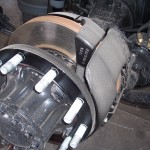
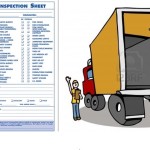

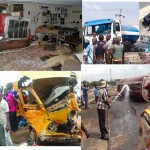
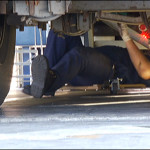

This is breaking new grounds in otherwise forgotten area in our national life. I salute this innovation and wish you more grease to your elbows…please do not relent in making the entire Nigerians alive to their responsibilities regarding road usage, especially the haulage industry. Much lives and property are lost to improper use and misuse of the road; but I think that with Haulage Report Now, we are close to finding a lasting solution to all the quagmire.
ChuxO
This is a great move; please do not sleep on it.
@Chuxo; Thanks so much for expressing so much faith in what we are doing! You have hit the nail squarely on the head with your view regarding what the original vision for this initiative is. We do hope with God and people like you that we will surely achieve our goal. Our roads shall indeed be safe again. We look forward to welcoming more of your comments. You may also want to check out other materials on the blog. Thank you.